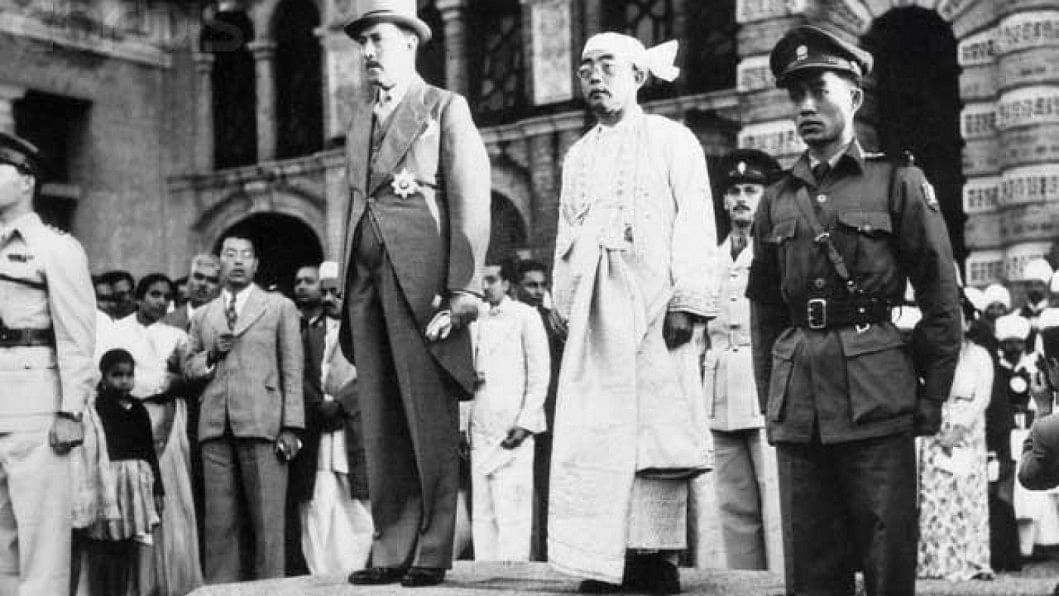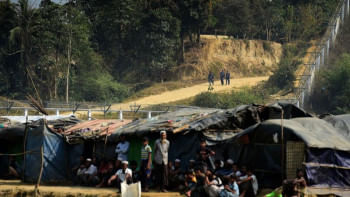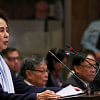A forgotten partition: Myanmar’s long separation from South Asia

The year 2022 is a special year in more than one way. While three countries in South Asia – Bangladesh, India, and Pakistan – observed the 75th anniversary of both partition and independence from the British Empire, Bangladesh will also celebrate the completion of 51 years of its independence from Pakistan. However, this year also happens to mark the 85th anniversary of Burma's (Myanmar) separation from British India – an occasion largely unobserved, just as the actual events of 1937 remain forgotten from public memory.
The struggle for independence and the subsequent partitions in 1947 and 1971 were momentous events which came at terribly high costs, as millions were displaced and sacrificed at the altar of bigotry. Though the 1937 separation of then Burma from British India was a muted affair, the real cost of this partition can only perhaps be measured in terms of the human tragedy that has unfolded with the genocide of the Rohingya people and their displacement from their homeland in Arakan (the Rakhine state).
On September 16, 2022, 18-year-old Iqbal Bari lost his life when a military shell fired by the Myanmar military across the border exploded at the Rohingya camp near Bandarban's Tumbru bazaar. While Bari might be the latest victim of this ongoing onslaught unleashed by the Tatmadaw (Myanmar military), it perhaps provides a moment to introspect about the long shadow of the 1937 partition of Burma.
The partitions of 1947 and 1971 had created postcolonial states. However, what was the first partition of the British Raj in 1937 created a separate crown colony with very little representative government under the Government of Burma Act 1935. Even though Burma's separation from the rest of South Asia was a "colonial partition" brought about as an internal administrative change within the British Empire, it had far-reaching repercussions and was certainly not uncontested.
There were genuine concerns among a section of Burmese nationalists that their country's separation from India was a ploy on the part of the colonial administration to halt the advance of representative government in Burma. The Morley-Minto Reforms of 1909 had allowed for Indian representation based on separate electorates for Muslims in all the provincial councils of British India, except Burma. The only elected representation allowed in Burma was from the European community. The immense contribution of British India to the war efforts in World War I (1914-1918) meant that there was a growing pressure from the Indian nationalists to enact further political reforms. The Home Rule Movement (1916-1918) advocated for granting self-government within the British Empire. The British administration responded by introducing the Montagu-Chelmsford Reforms of 1919. These new set of reforms introduced the concept of "dyarchy" in all the major provinces of British India.
Dyarchy allowed some aspects of governance at the provincial level under the "transferred list," such as agriculture, health, education, etc, to be managed by Indian ministers. Matters of defence, communications, and foreign affairs were retained under British control as a "reserved list" of government affairs. However, the original Montagu-Chelmsford proposal had categorically excluded Burma from the scope of dyarchy. Sir Reginald Henry Craddock, the then lieutenant governor of Burma, was tasked with finding alternative reforms for Burma. The Craddock Schemes, which were extremely limited in scope, came under sustained criticism from Burmese nationalists, particularly by the Young Men's Buddhist Association (YMBA), which ultimately led to the introduction of dyarchy in Burma from 1921.

Even though the anti-Indian riots, particularly the Saya San Rebellion (1930-1932), had given voice to separation from India among a section of Burmese nationalists, there were genuine fears that this was a mechanism to deprive Burma of any reforms that might come out of the Indian Round Table Conferences that were being held in London from November 1930. These apprehensions were not unfounded as the Simon Commission Report published in May 1930 had recommended that Burma be separated from India and a separate commission be convened to examine the scope for further political reforms in Burma. On the other hand, the Simon Commission recommended abolishing dyarchy in all other provinces of India and extending the concept of provincial autonomy.
There were fears that the British Empire was being restructured into three tiers. Through the Balfour Declaration, the white dominions of Canada, Australia, New Zealand, Newfoundland, South Africa, and the Irish Free State were declared to be autonomous and equal in status to the UK within the British Empire at the 1926 Imperial Conference held in London. It was widely expected that India would be allowed advancement in political autonomy, if not outright granted the dominion status, at the conclusion of the Round Table Conferences. This meant the proposed separation of Burma was understood to be a device to keep Burma at the lowest rung of the empire as a Crown Colony.
The Burma Conference convened in London between November 1931 and January 1932 deliberated over the possibility of a constitution advanced enough to soothe the trepidations of anti-separatist elements. One outcome of these deliberations was the creation of Excluded Areas as a permanent feature for ethnic minorities in Burma. Although the Arakan Hill Tracts were designated as an Excluded Area under the Government of Burma Act, the rest of Arakan was integrated with Burma. Consequently, in February 1947, when Aung San (premier of the British Crown Colony of Burma) concluded the historic Panglong Agreement for a new federal arrangement, only the representatives from Shan, Chin, and Kachin Excluded Areas were signatories to the agreement.
Anticipating the exclusion from political life, the Arakanese Muslims in May 1946 petitioned Muhammad Ali Jinnah to annex the Maungdaw region of Arakan to East Pakistan. However, Jinnah refused to entertain the idea, given that the 1937 separation had firmly placed Arakan within Burma. Thus, the colonial instrument of separation 85 years ago, though forgotten, remains consequential not only for Burma, but also for the rest of South Asia.
Tathagata Dutta is a PhD candidate at the Department of History and a dissertation fellow at the Center for Humanities in Tufts University, US.

 For all latest news, follow The Daily Star's Google News channel.
For all latest news, follow The Daily Star's Google News channel. 










Comments